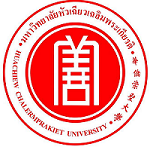Please use this identifier to cite or link to this item:
https://has.hcu.ac.th/jspui/handle/123456789/3555Full metadata record
| DC Field | Value | Language |
|---|---|---|
| dc.contributor.author | Wawmayura Chamsuk | - |
| dc.contributor.author | Wanno Fongsuwan | - |
| dc.contributor.author | Josu Takala | - |
| dc.contributor.author | แววมยุรา คำสุข | - |
| dc.contributor.author | วรรณโณ ฟองสุวรรณ | - |
| dc.contributor.other | Huachiew Chalermprakiet University. Faculty of Business Administration | en |
| dc.contributor.other | King Mongkut’s Institute of Technology Ladkrabang. Faculty of Administration and Management | en |
| dc.contributor.other | University of Vaasa | en |
| dc.date.accessioned | 2025-01-20T09:22:16Z | - |
| dc.date.available | 2025-01-20T09:22:16Z | - |
| dc.date.issued | 2017 | - |
| dc.identifier.citation | Management and Production Engineering Review 8,1 (March 2017) : 101-112. | en |
| dc.identifier.other | DOI: 10.1515/mper-2017-0011 | - |
| dc.identifier.uri | https://has.hcu.ac.th/jspui/handle/123456789/3555 | - |
| dc.description | สามารถเข้าถึงบทความฉบับเต็ม (Full text) ได้ที่ : https://journals.pan.pl/dlibra/publication/121935/edition/106278/content | en |
| dc.description.abstract | A structural equation model was used to verify both the direct and indirect influences on research and development and innovation capabilities that affect Thai automotive parts enterprises competitive advantage. Thailand’s automotive sector is a major driver of the economy with a multi-thousand network of both domestic and international companies contributing a significant amount to both domestic and Asian economic growth. After peaking in 2013 and reaching the Top 10 automotive nations, there has been a slide backwards. Competition is fierce and the pace of change ever quickening. Therefore, the researchers sought to determine how the automotive parts sector needed to improve in capability, skills and infrastructure to maintain a sustainable competitive advantage. From the structural equation model analysis of 220 regional automotive parts sector managers and use of AMOS software, it was determined that research and development combined with innovation plays key roles in the industry’s profitability and survivability. Additionally, there must be support across a wide sector of the economy, including universities, government agencies and institutions. Once championed as the ‘Detroit of Asia’, Thailand’s recognized success as a global automotive hub is a classic case of a well-executed industrial plan but that lead can potentially slip away without embracing new technologies and innovative thinking. | en |
| dc.language.iso | en_US | en |
| dc.subject | อุตสาหกรรมชิ้นส่วนรถยนต์ -- ไทย | en |
| dc.subject | Automobile supplies industry -- Thailand | en |
| dc.subject | แบบจำลองสมการโครงสร้าง | en |
| dc.subject | Structural equation modeling | en |
| dc.subject | การแข่งขันทางการค้า | en |
| dc.subject | Competition | en |
| dc.subject | นวัตกรรมทางเทคโนโลยี | en |
| dc.subject | Technological innovations | en |
| dc.subject | วิจัยทางอุตสาหกรรม | en |
| dc.subject | Research, Industrial | en |
| dc.title | The Effects of R&D and Innovation Capabilities on the Thai Automotive Industry Part’s Competitive Advantage: A SEM Approach | en |
| dc.type | Article | en |
| Appears in Collections: | Business Administration - Articles Journals | |
Files in This Item:
| File | Description | Size | Format | |
|---|---|---|---|---|
| The-Effects-of-R&D-and-Innovation-Capabilities-on-the-Thai-Automotive-Industry-Part.pdf | 64.41 kB | Adobe PDF | View/Open |
Items in DSpace are protected by copyright, with all rights reserved, unless otherwise indicated.
